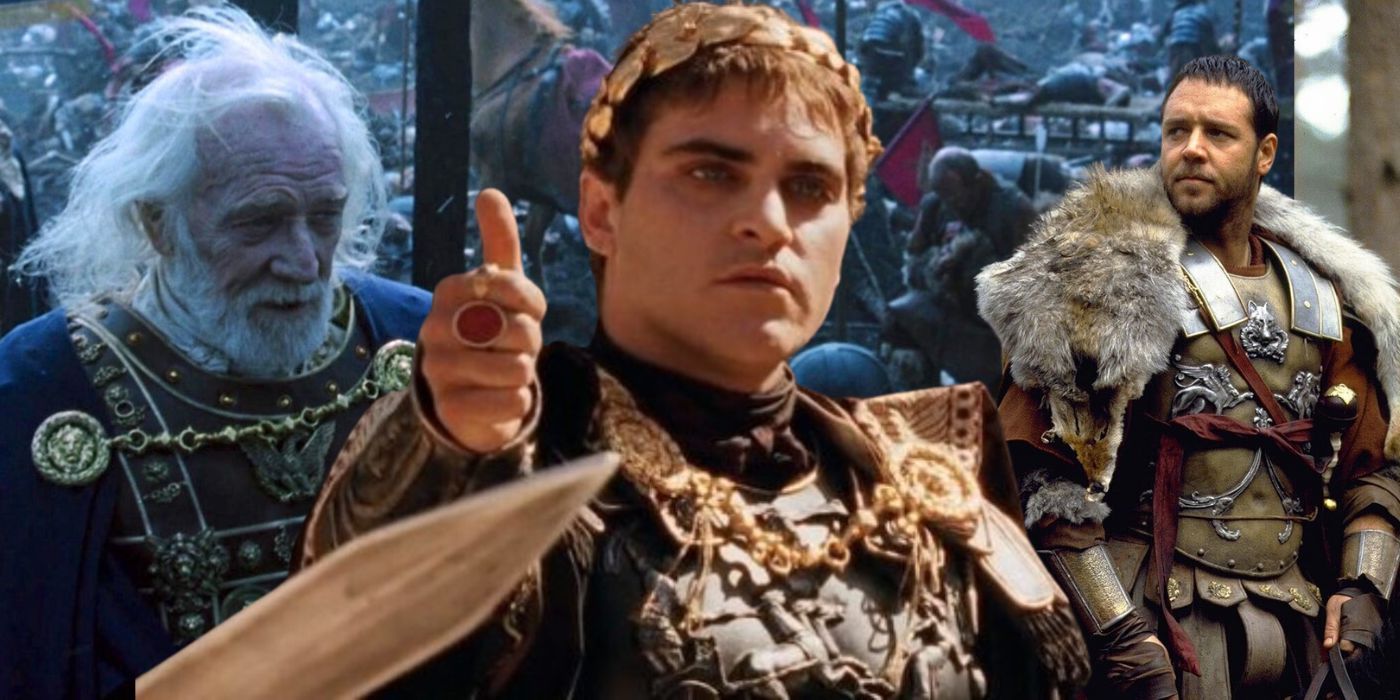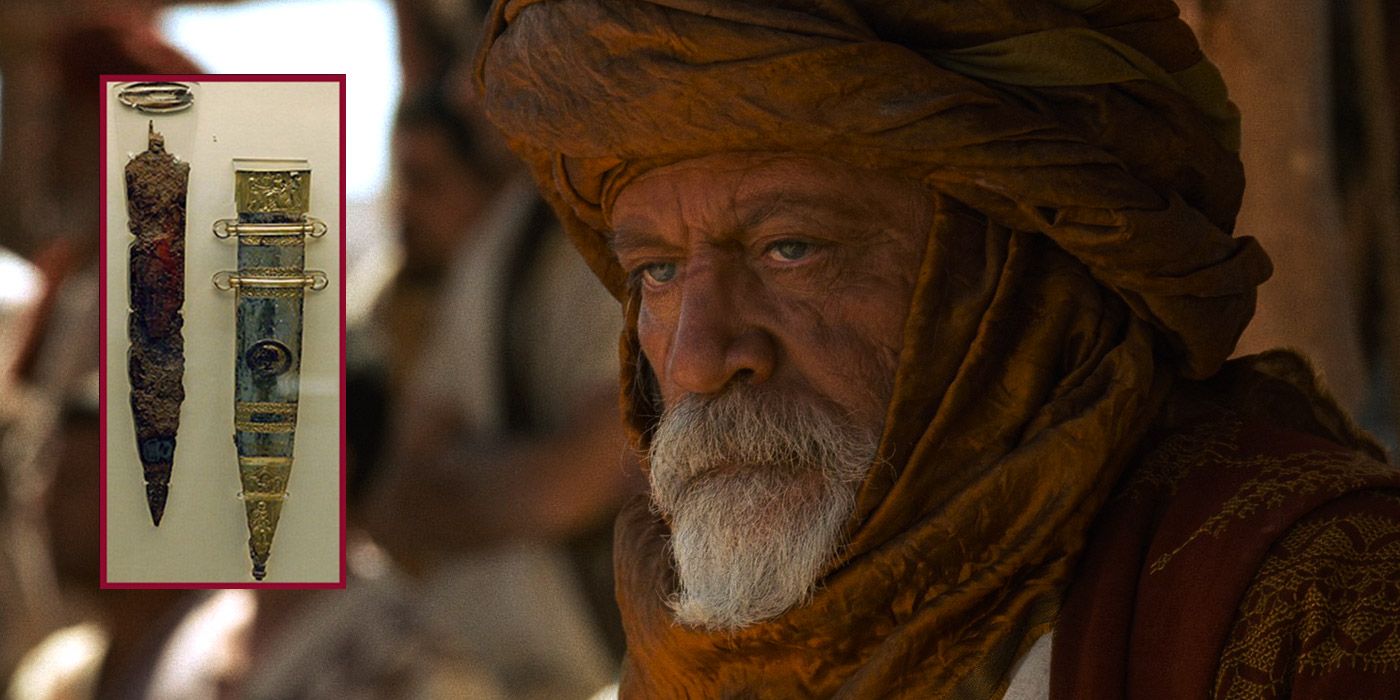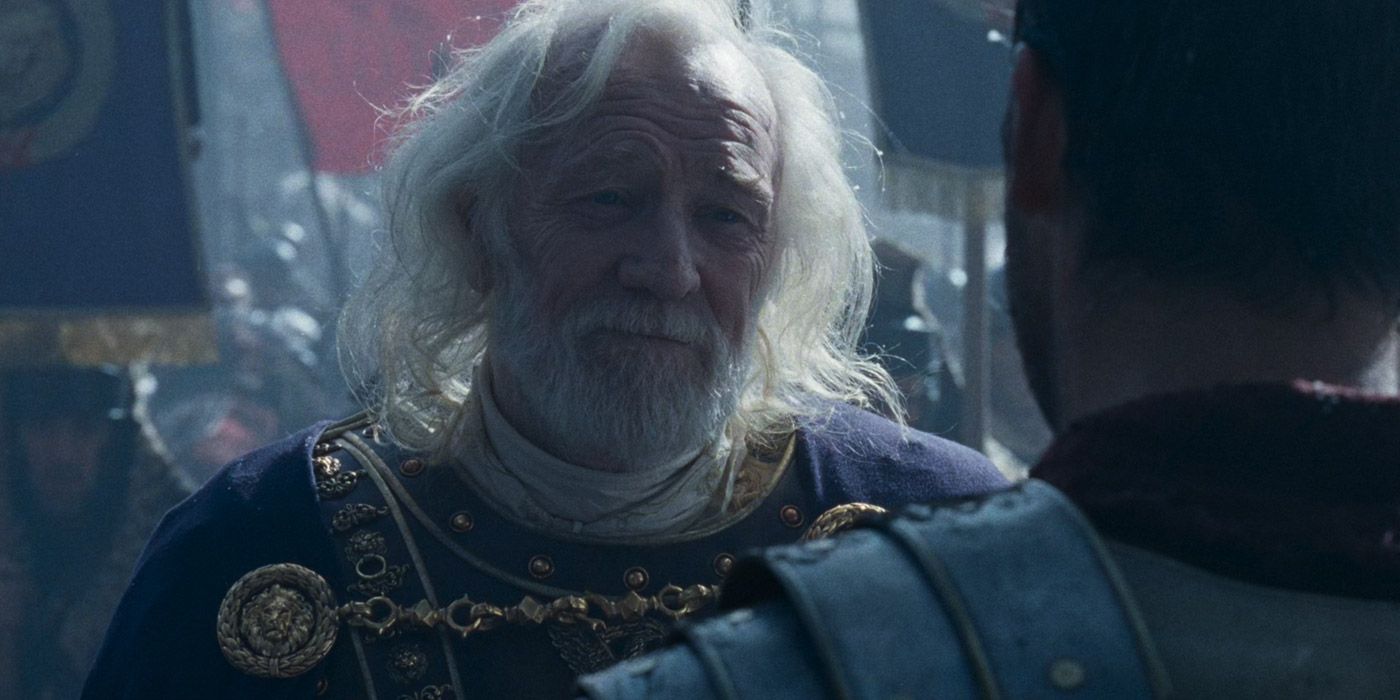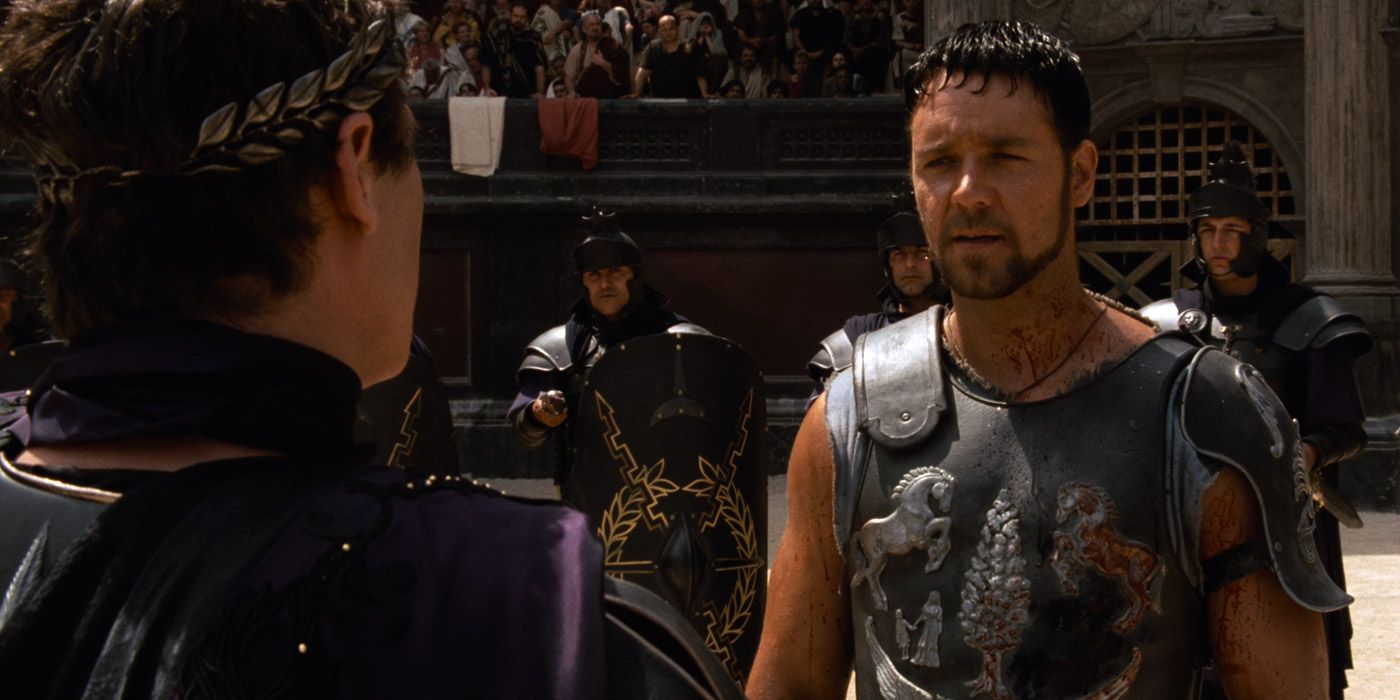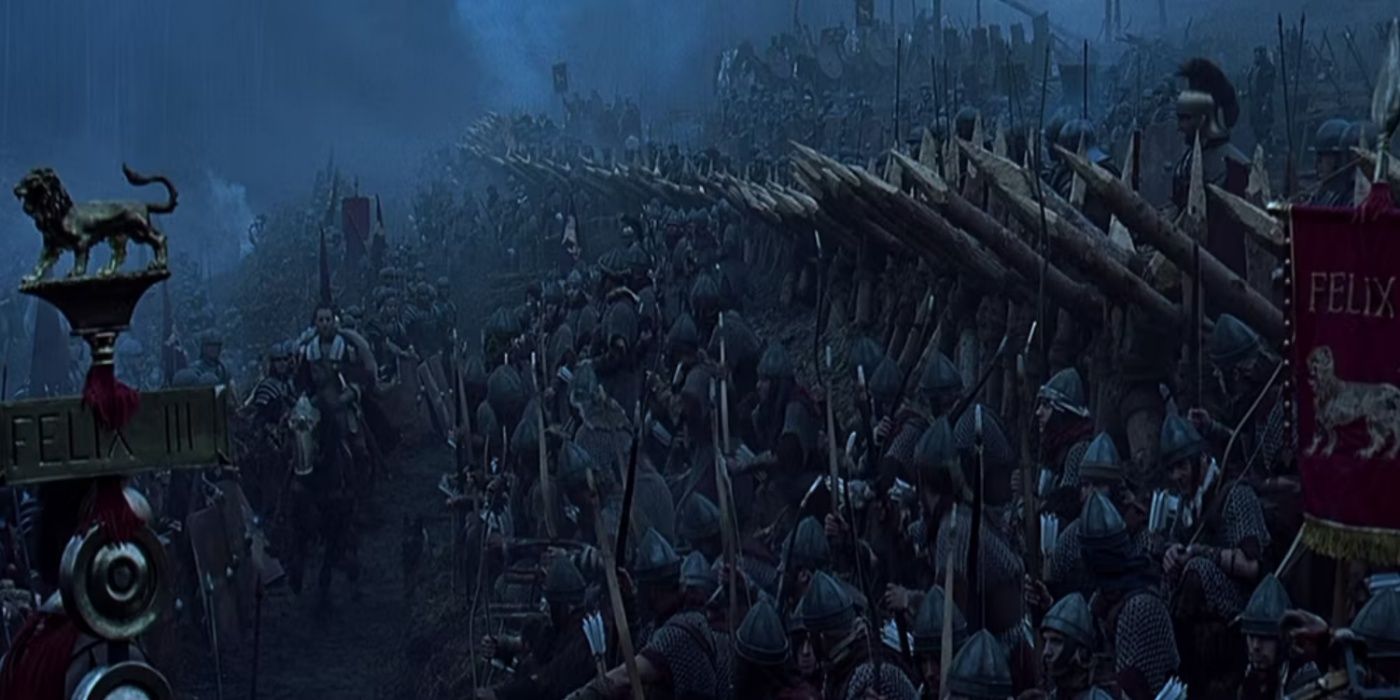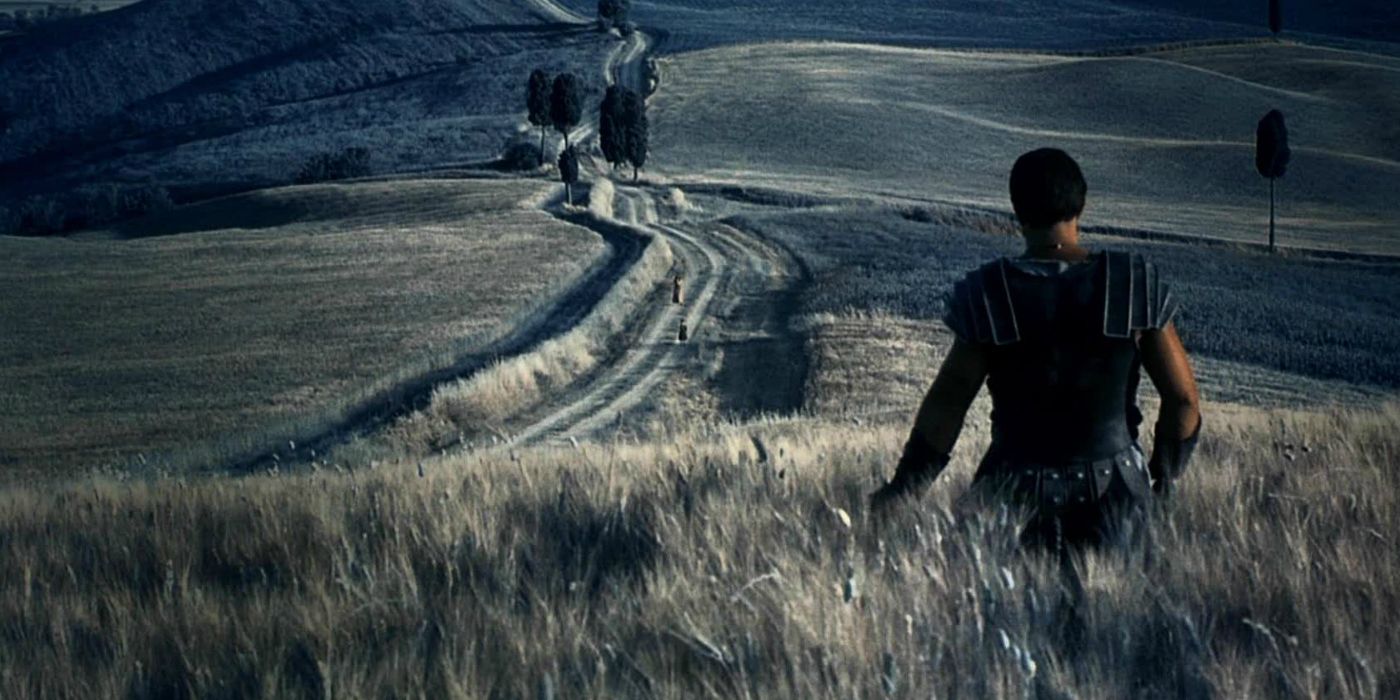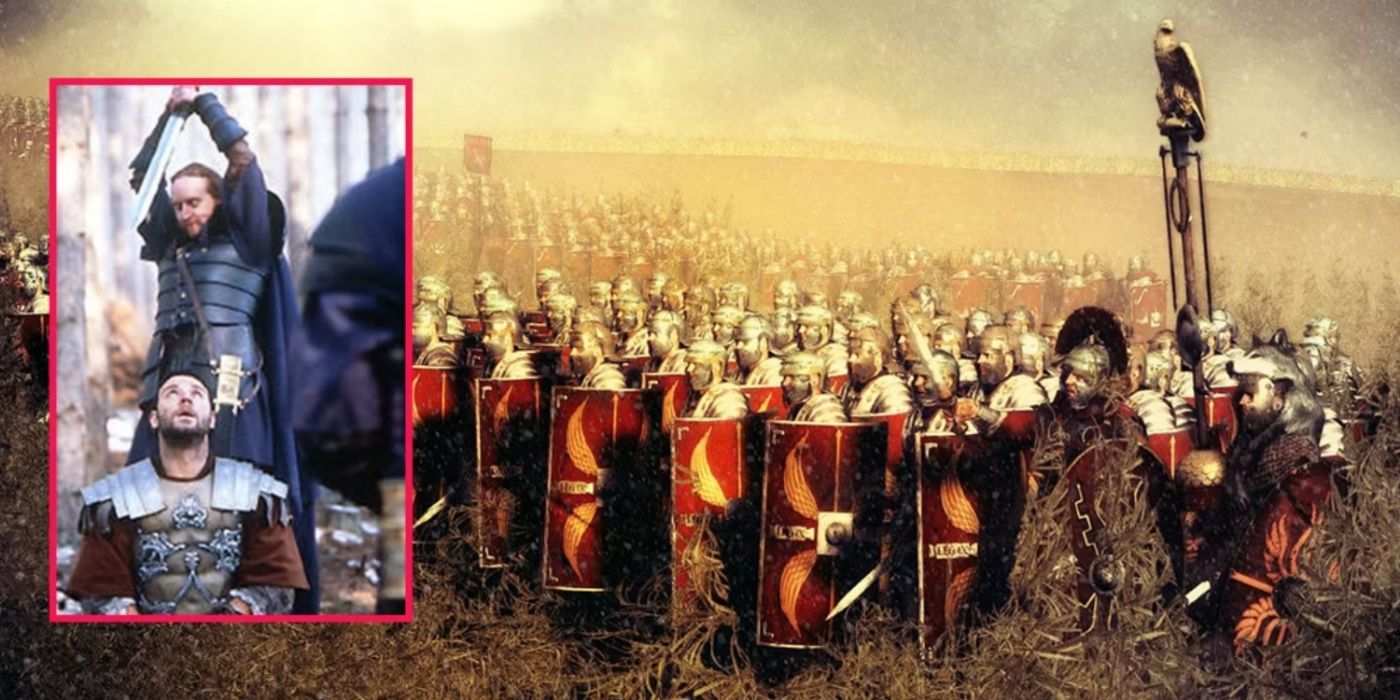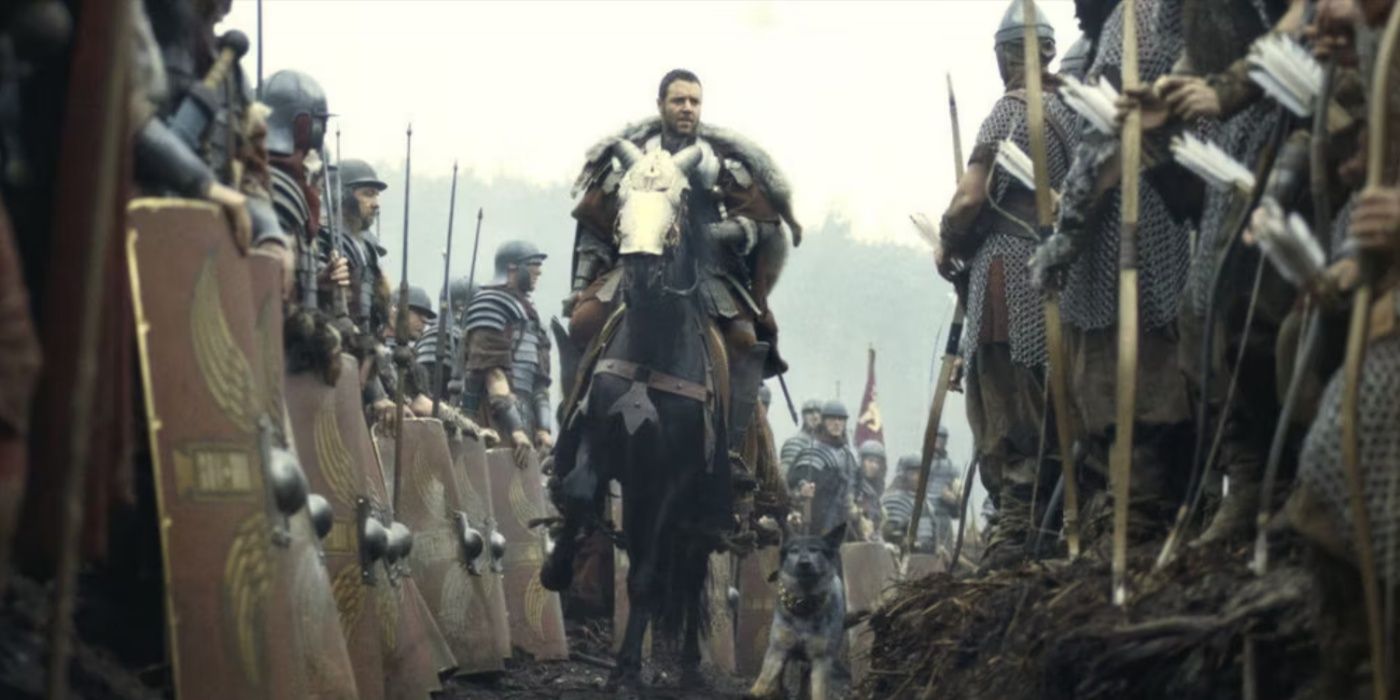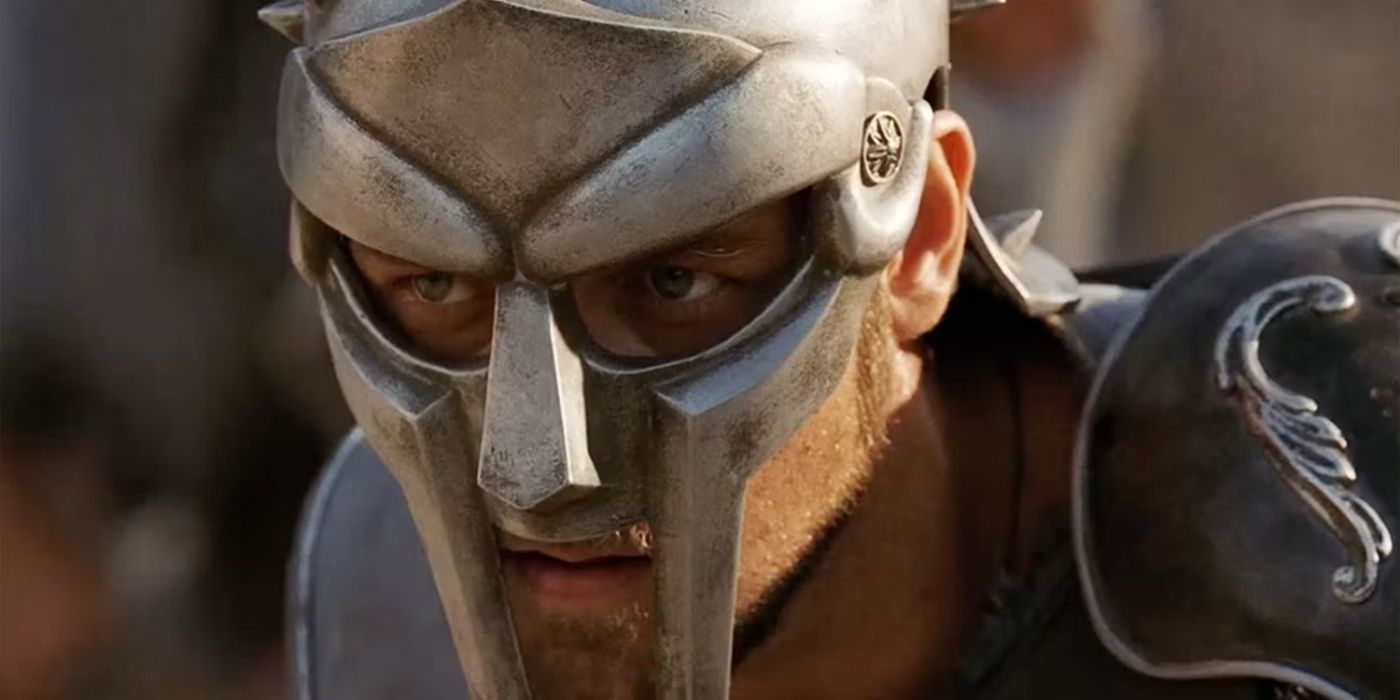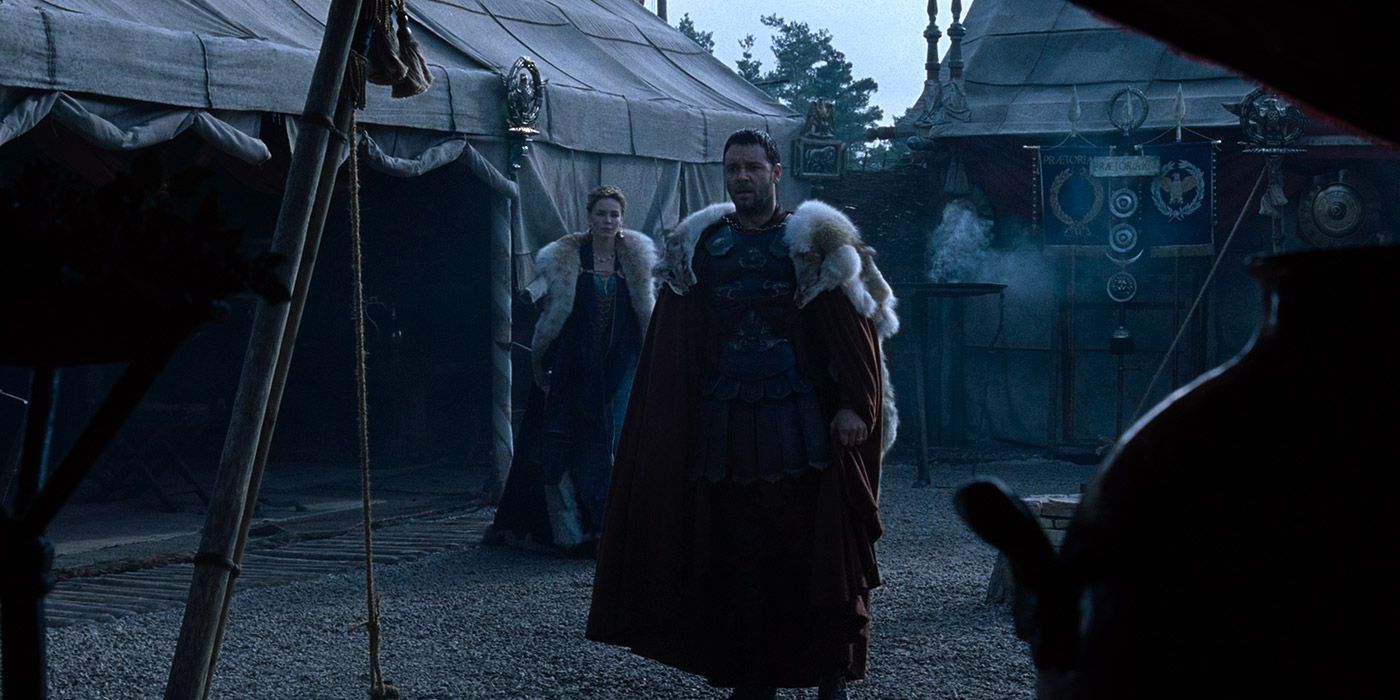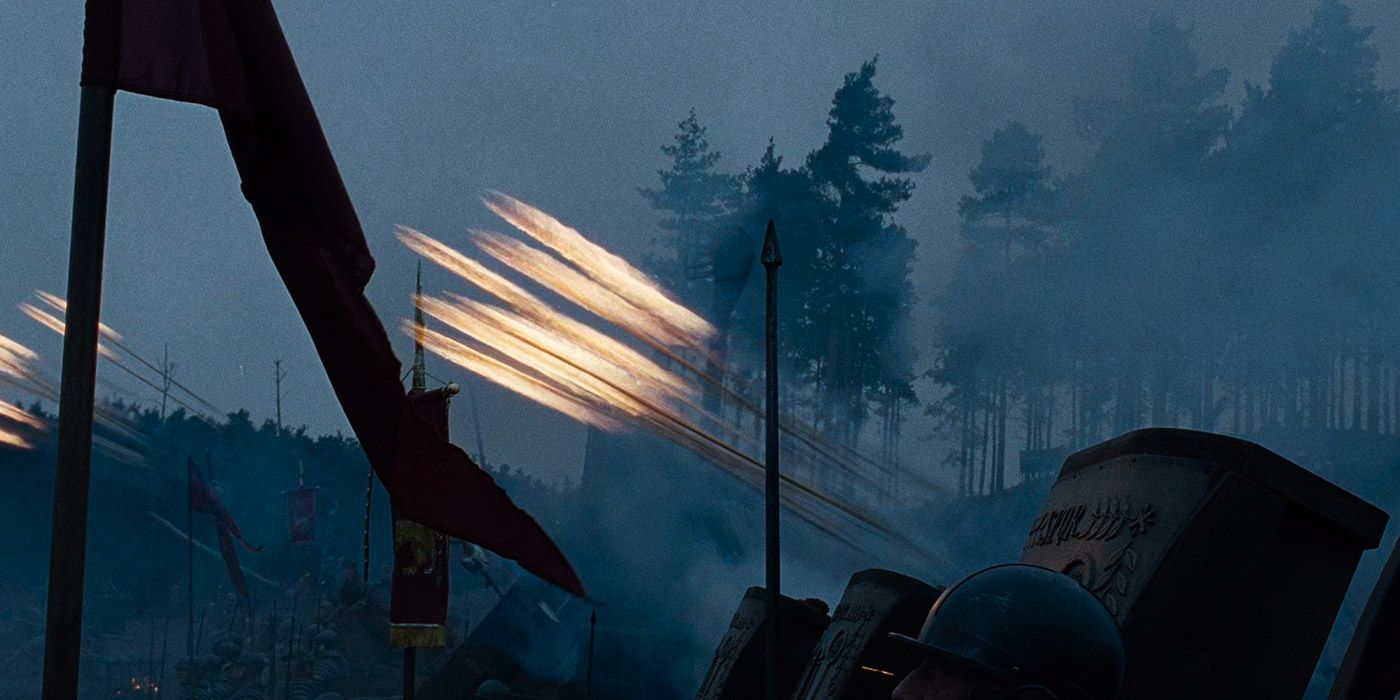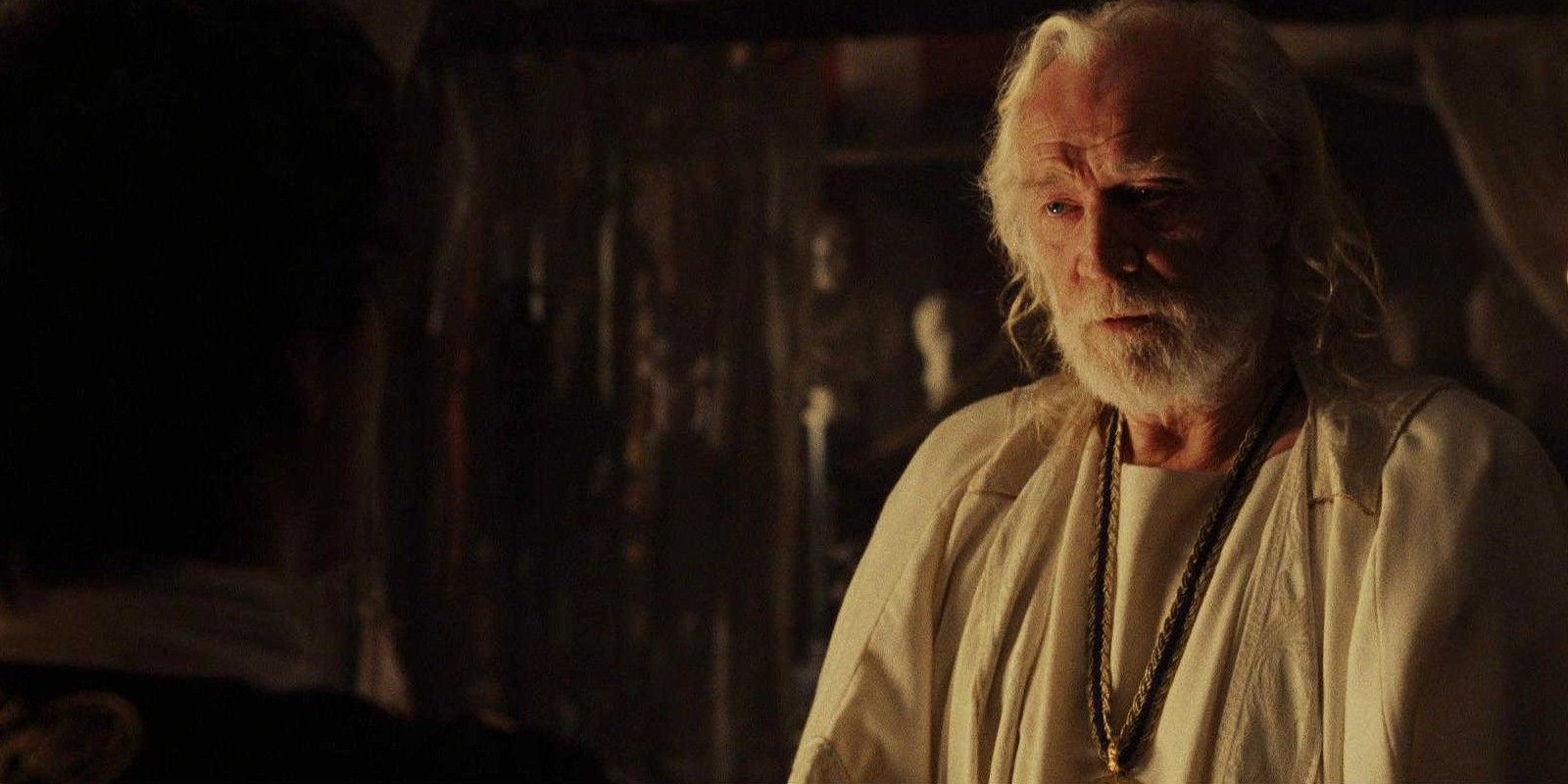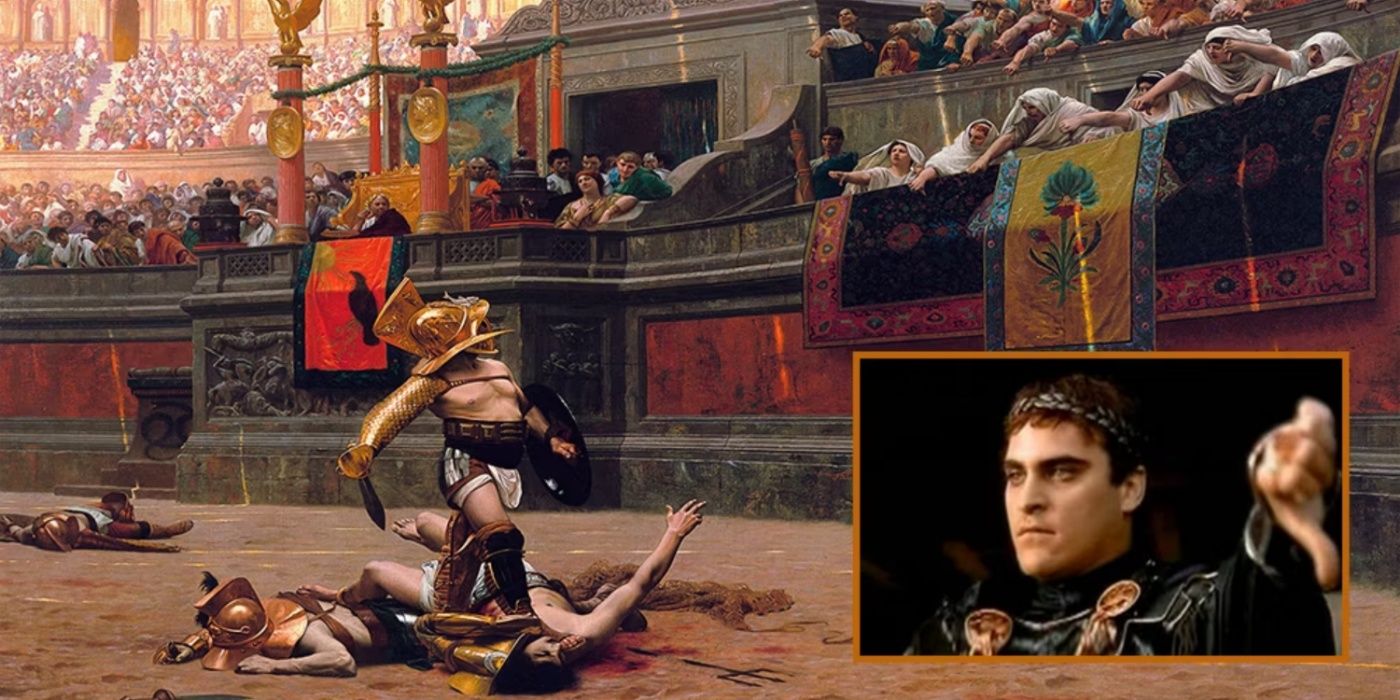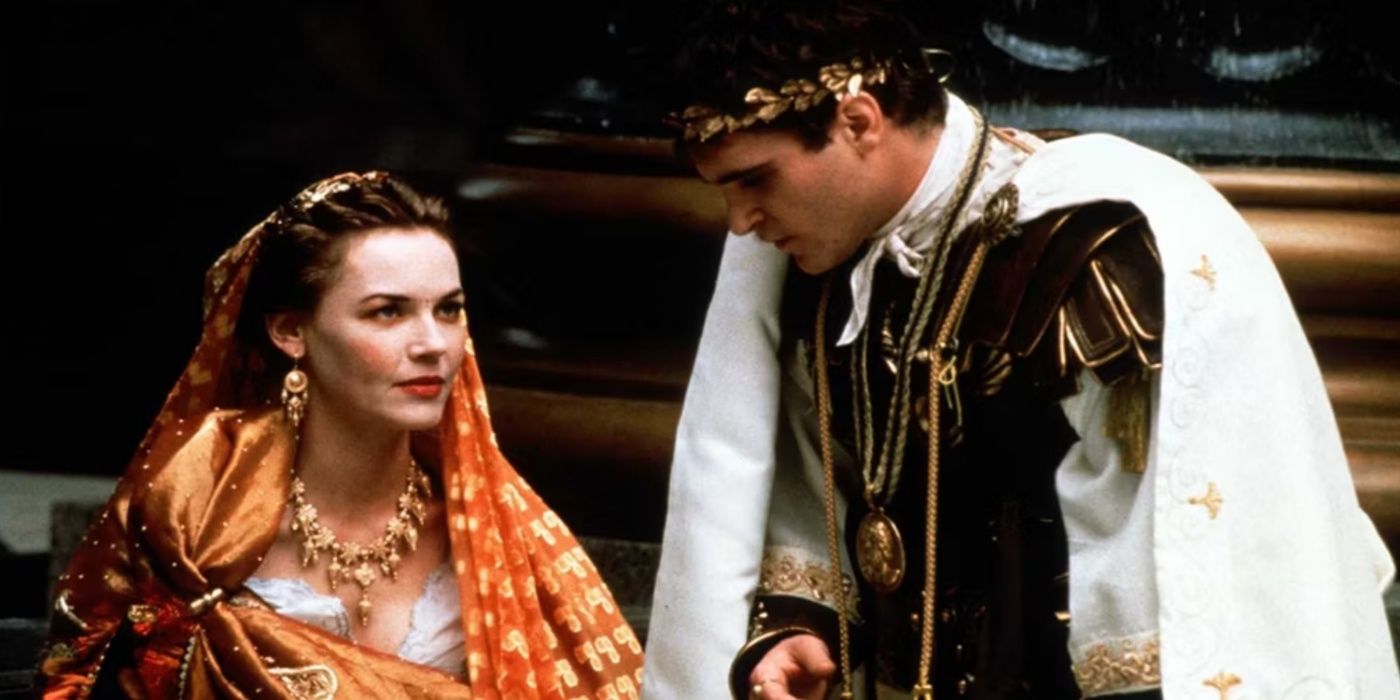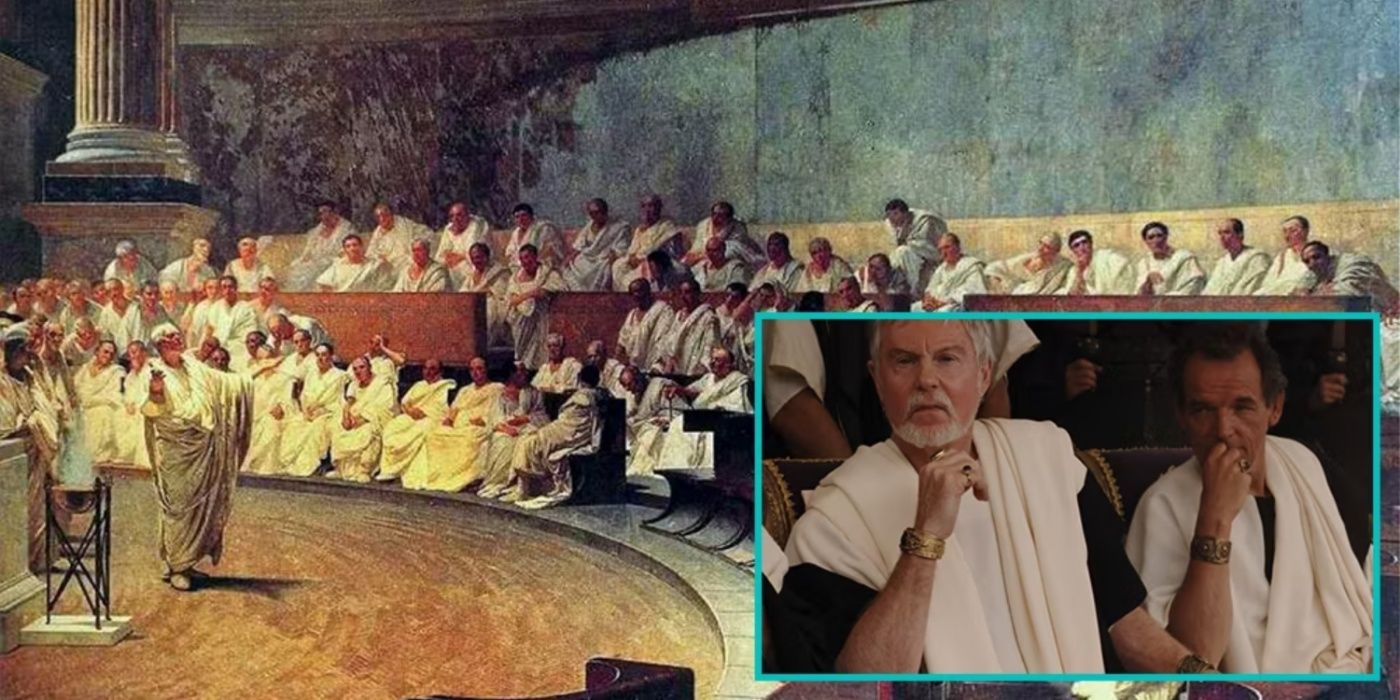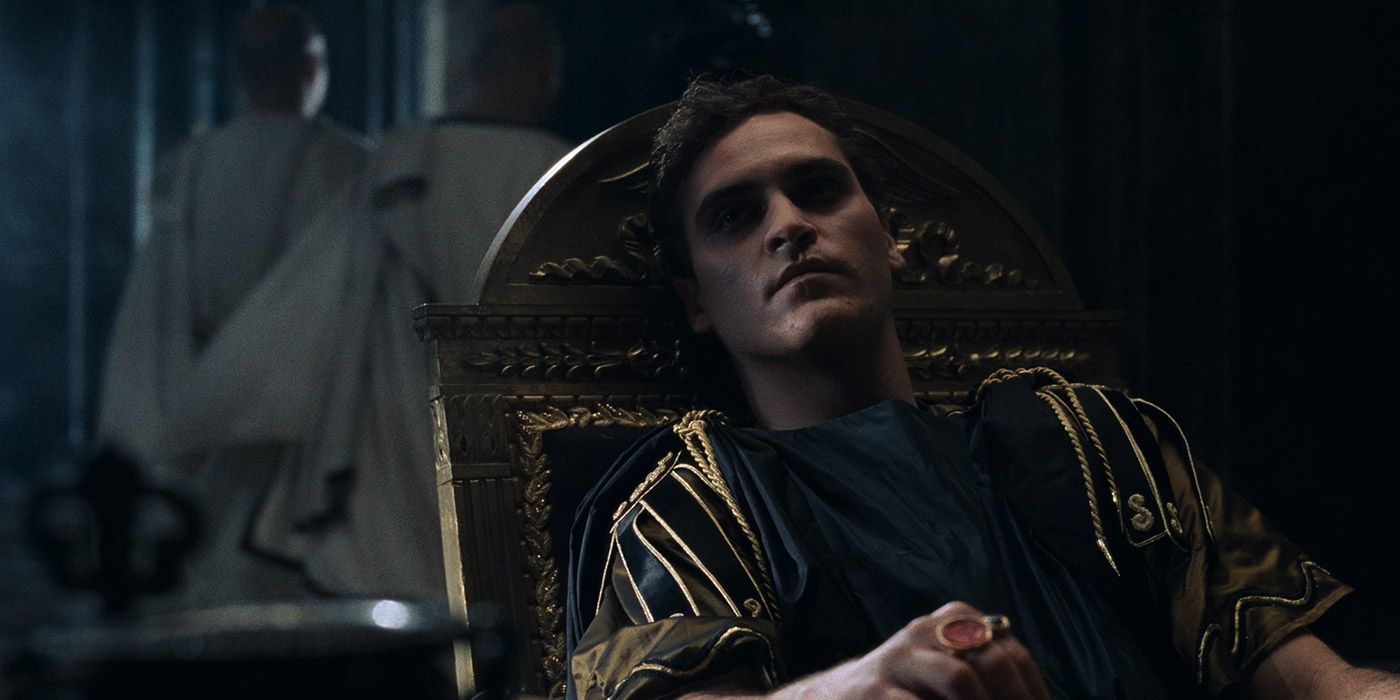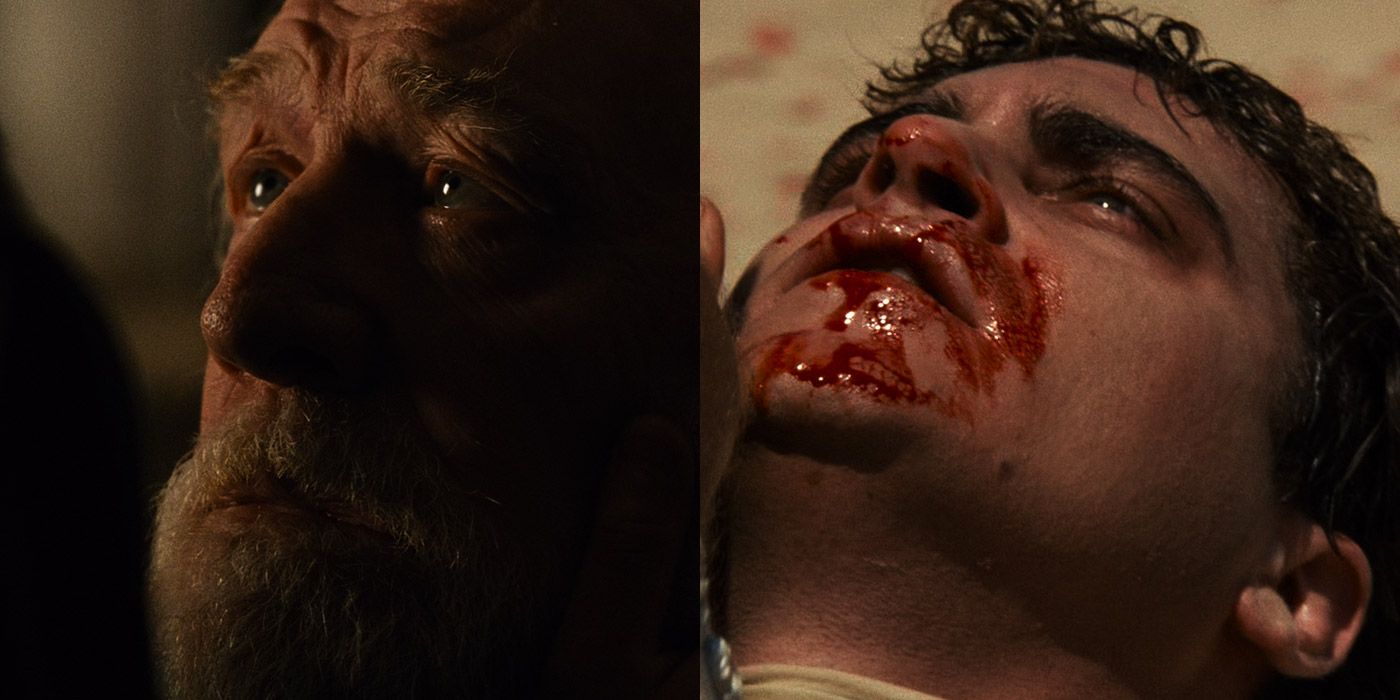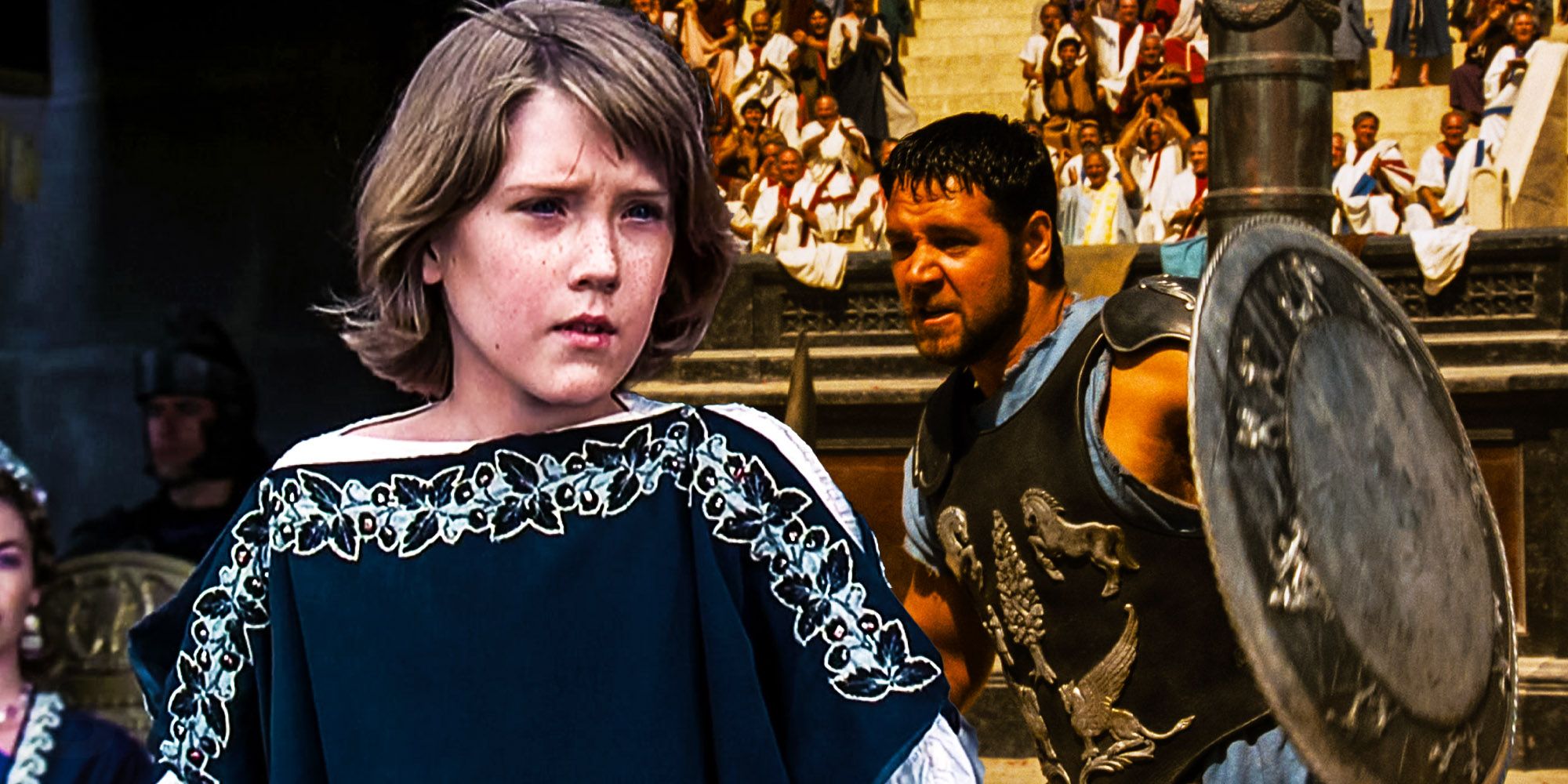Summary
- Gladiator, the Oscar-winning 2000 movie from Ridley Scott, takes creative license with the factual events of Ancient Rome, but some aspects reflect real historical truths such as the process of granting freedom to gladiators.
- The character of Marcus Aurelius in Gladiator is fairly historically accurate, depicting him as a competent and fair ruler who co-ruled alongside Lucius Verus.
- While Gladiator suggests that gladiators achieved celebrity status, they were actually seen as lowly and their purpose was to fight and die. However, it is true that gladiators included product placement in their routines.
Movies based on real life are never completely accurate, and the Gladiator historical accuracy has been hotly debated since the Oscar-winning movie came out in 2000. There are several things that this movie fictionalizes, including the main character, the fate of the villain, and even the events that happened in the military and gladiatorial battles of Ancient Rome. While Gladiator had a team onboard to ensure its historical accuracy in many areas, there were several things that bothered even these crew members, as Ridley Scott took some serious creative license with the factual events of the Roman Empire at the time.
While many moments in Gladiator are not accurate compared to real life, there are also several moments in the movie that reflect what really happened in Ancient Rome. While Maximus might not have been based on a real historical figure, he was based on many historical accounts of real gladiators and the lives they led. There are also some genuine historical truths Scott left out because he thought no one would believe it was true. One example is the real gladiators of Rome promoting products before and after fights, which really happened, but Russell Crowe said was "not going to ring right to a modern audience" (via Variety).
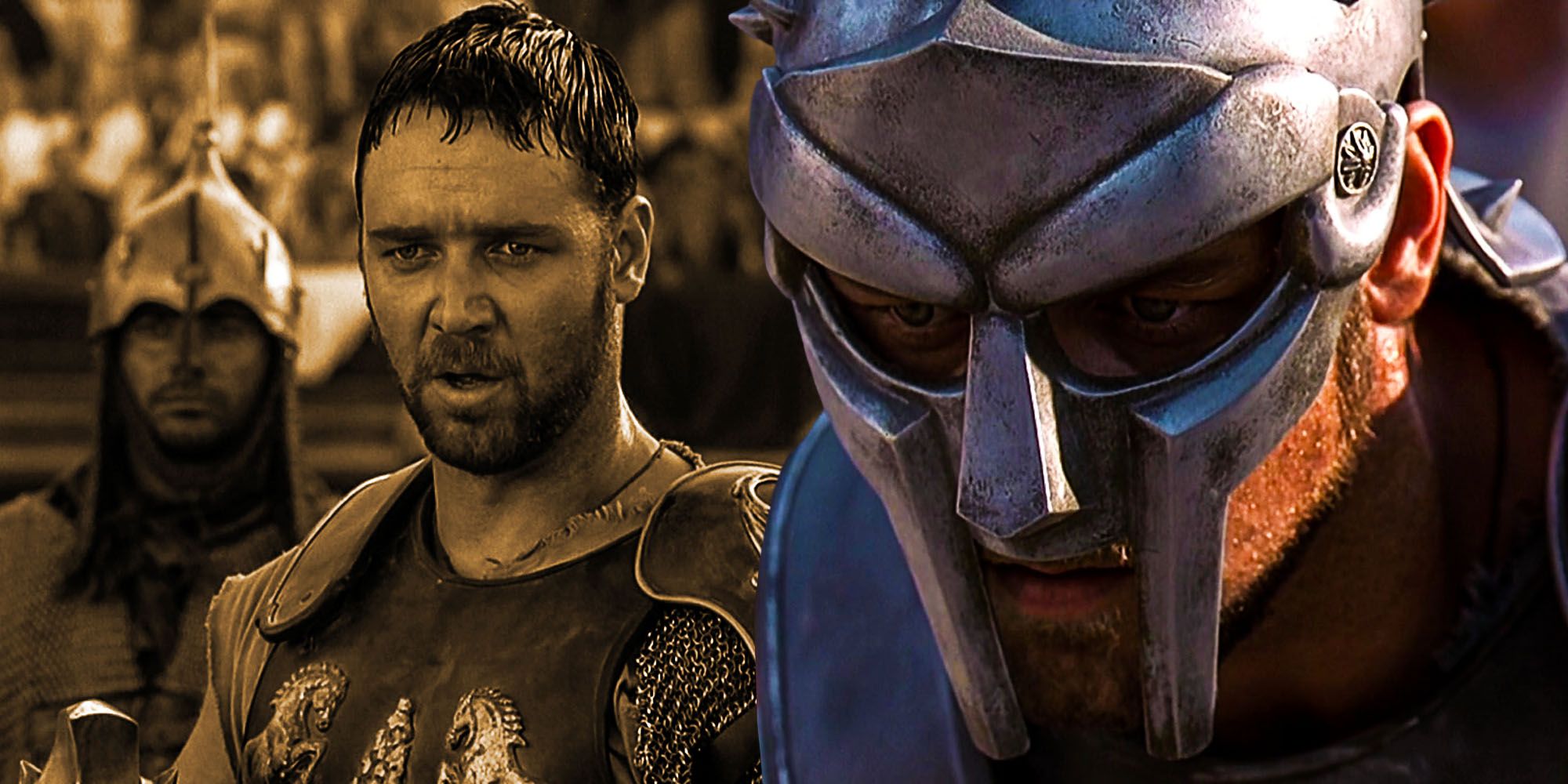
Gladiator True Story & Historical Accuracy: How Much Really Happened
Ridley Scott's Gladiator is based in the history of ancient Rome, but while the movie is accurate in some areas, it take poetic license in others.How Gladiator Was Historically Accurate
1: The Symbol Of Freedom
One of the more interesting characters in the film was Proximo, the former gladiator who opened his own arena in Rome after gaining his freedom. His description of the process by which a gladiator would be given his freedom is historically accurate. Once a gladiator had survived to reach retirement or had earned his freedom, he was given a wooden sword, or 'rudis', as a symbol. Although Proximo was freed by Emperor Marcus Aurelius, it was not necessary for every gladiator to receive that dispensation from the Emperor himself. Gladiator 2 will also feature an enslaved gladiator who won his freedom, further exploring this unique historical scenario.
2: Marcus Aurelius, The Man
The film takes a few liberties with the character of Marcus Aurelius, particularly when it comes to the nature of his rule. At the time, he co-ruled alongside Lucius Verus, his daughter's husband. Besides the small caveats, Aurelius was something of a celebrity during his 161–180 CE reign. He was considered a good ruler, both competent and sound of mind, fair and tempered. This certainly seems to translate well into the figure depicted on screen, and his depiction in Gladiator is fairly historically accurate.
3: The Social Status Of Gladiators In Rome
Gladiator attempts to add a bit of glamor to the life of a gladiatorial combatant by suggesting that the best of the best would achieve celebrity status. In reality, the combatants were lower than dirt in the eyes of many Roman people. They were there to fight and die, nothing more. That being said, the cost-prohibitive nature of bouts to the death meant that most gladiators yielded in combat, in order to fight another day. It is also interesting to note that the gladiators in real life included product placement in their routines, a historically accurate moment Ridley Scott chose to leave out of Gladiator.
4: The War In Germania
Gladiator had one of the most stunning and visceral openings to a classical epic ever filmed – a huge battle between the Roman army, and the Germanic hordes. Shot in a jarring and violent manner, the sequence puts the audience directly in the middle of the battle to feel the raw grit, dirt, and blood. Historically speaking, the suggestion that the Roman Empire was engaged in a prolonged war with Germanic tribes is accurate. Marcus Aurelius spent the latter part of his reign securing the northern frontier in an attempt to keep the Germanic tribes at bay.
5: Maximus' Character
The character of Maximus Decimus Meridius may be fictional, but his personality and characteristics were firmly steeped in Roman history. When Rome faced a dire external threat, the Senate would appoint one man to see it through, with the expectation they would relinquish power when the threat was vanquished. As the legend goes, the Senate approached Lucius Quinctius Cincinnatus to subdue a hostile force. It took Cincinnatus 15 days to quell the threat, and once he did, he returned to his modest farming life. Maximus’ steadfast refusal to assume power in Rome mirrors that of the legendary Roman general Cincinnatus.
6: Enmity Between The Praetorian Guard & The Legion
The Praetorian Guard were the Roman Emperor’s personal bodyguards and intelligence gatherers, keeping him safe from physical and political threats. The life of a Praetorian Guardsman was different from that of a Legionnaire, as they got to stay in Rome in relative comfort and safety, while the legions fought on the outskirts of the Empire. This didn’t sit well with the average soldier, who looked at the Praetorians with disdain. The rivalry in Gladiator is historically accurate, portrayed perhaps most prevalently in the scene where Maximus escapes his execution in the North, calling one of his would-be executioners “Praetorian” in a derisive way, before dispatching him.
7: Loyalty Of The Legion
Maximus told Gracchus, “Let my men see me alive, and you shall see where their loyalties lie.” Roman armies were extremely loyal to their generals, something Gladiator got right about Roman history. The strong sense of loyalty and camaraderie from Legionnaires who fought and bled together for the Empire is recounted in many historical accounts from the time. Also, Roman generals were responsible for securing retirement packages for their troops in the form of land, pensions, or the promise of spoils from war. Generals who ate with their soldiers, slept in the same barracks, fought side-by-side with them, and guaranteed a comfortable retirement were idolized and fought for till death.
The Historical Inaccuracies In Gladiator
1: Maximus' Existence
Russell Crowe's portrayal of Maximus sets the narrative tone. His tribulations, losses, and victories are all born from a system that once held him aloft, only to send him into the abyss when it was convenient. As effective as the story of Maximus is, the character didn’t exist. He's a complete fabrication created solely for the film and has no mention in history whatsoever. Hollywood films often do this in order to create a recognizable anchor for the audience to follow along. In Maximus' case, he's there to sell big moments, such as a vengeful speech delivered unto his blood enemy Commodus in one of the most iconic quotes Gladiator has to offer.
2: The Presence Of Christianity In Gladiator
The film insinuates that Christianity is an influential religion during the time period in which the story takes place. Hints of this are strewn about, particularly during a conversation between Lucilla and Maximus where she mentions praying in a manner that suggests it's a private matter. The prevalence of Christianity during this point of the Roman Empire was historically inaccurate in Gladiator. Lucilla would never have gone against the Roman religion of the time, and Christianity would not hold sway over the Empire until much later in 380 CE. It creates a sense of gravitas by adding Christianity as an anchor for the audience, but it's a false assumption.
3: Weapons Of War During The Time Period
Historical movies tend to fictionalize the little things, but those who know said history can spot them a mile away. Weapons are one of the things that suffer the most in adaptations, as filmmakers sometimes yank items out of an arsenal from an entirely different time period. Gladiator features massive dart launchers and catapults to sell the excitement of the opening scene in Germania, one of the most epic opening battles in cinematic history. Unfortunately, these were siege weapons in use at the time as a means of stationary defense, as opposed to moving platforms fighting in a forested environment. It just doesn't pan out.
4: Marcus Aurelius Banned Gladiator Battles
In Gladiator, Marcus Aurelius banned gladiator games, according to Antonius Proximo. He called Marcus wise for making this decision. While the ruler was benevolent, this was a historically inaccurate Gladiator moment. The real Marcus was indeed against the bloodlust of gladiator games, he kept them going because of their overwhelming popularity. However, he did everything he could to make them safer for the enslaved involved in these battles. He took away blades and made the gladiators use blunted weapons, making it more of an athletic competition than a fight to the death. This ended up helping the nation as Marcus used gladiators in the first Marcomannic War.
5: Thumbs Up/Down
Historical battle scenes like the ones depicted in Gladiator rely a great deal on intense drama and exciting themes to draw the audience in. One of the ways the film does this is by featuring several scenes where the fate of the arena combatants is decided with a thumbs-up or down gesture by Joaquin Phoenix's terrifying Commodus. However, there is little-to-no evidence that these precise gestures were used. The erroneous belief comes from a painting of Roman gladiators by Jean-Léon Gérôme named Pollice Verso, which shows the audience using the thumbs-down sign to call for the death of the defeated gladiator.
6: Lucilla & Commodus
Lucilla was presented as an upstanding woman in Gladiator who was concerned with the state of the Roman Empire. Her tempestuous relationship with her cruel brother Commodus is a main theme in the movie. Although it’s true that Lucilla did organize a botched assassination attempt on Commodus, there’s no evidence that he ever harbored any erotic feelings toward her. It’s probable that Rome’s reputation as an opulent, corrupt, and depraved empire may have inspired the film’s screenwriters to include such a salacious plot point in the script, but it has no basis in historical fact.
7: Roman Democracy
Audiences may have thought the Roman Empire more progressive than originally perceived when Gracchus states that “...the Senate is the people, sire. Chosen from among the people. To speak for the people,” envisioning a state similar to modern forms of representative democracy. Gracchus’ statement in Gladiator is historically inaccurate, however, as the Roman Senate’s composition was made up of representatives from Rome’s oldest leading families. Eventually, the nouveau-riche and provincials gained entry as well, but the interests of the Senate were usually selfish in nature, looking to increase personal and familial stature, and rarely looking out for the common folk.
8: Commodus, The Man
Commodus was depicted as something of an unhinged villain in Gladiator, but his real-life persona was far more outlandish. In fact, the film touches only lightly on the depths of his depravity. Once in power, he literally renamed Rome "the Colony of Commodus" in an obvious example of megalomania run wild. He was more like Caligula in many respects, with massive indulgences being something of a staple of his weekly schedule. Unfortunately, his legacy would suffer at the hands of historians who did not take pity on him as they recounted his deeds. Likewise, despite its Oscar status, Gladiator is one Best Picture that hasn't aged well, either.
9: The Deaths Of Marcus Aurelius & Commodus
Marcus Aurelius was one of the greatest Emperors of Rome, the last of the 'Five Good Emperors' of the Antonine Dynasty, and historically renowned as a platonic philosopher-king for his works in Stoic philosophy. Although it makes for a compelling drama to have him smothered by his son Commodus the murder scene in Gladiator didn't actually happen. The real Marcus Aurelius died of natural causes. As for Commodus, his fate was far less extravagant than the one seen in the film. He was actually assassinated by his sparring partner, a wrestler by the name of Narcissus, who had been bribed in a plot to replace the mad Emperor.
Is Gladiator 2 Set To Be Historically Accurate?
Gladiator 2 will be even less historically accurate than the first Gladiator movie. This is because the movie plans to tell a fictionalized tale about a real historical figure, with things that never actually happened in real life. The sequel will pick up 20 years after the end of the first Gladiator movie with Lucius Verus II and is also referred to as a revenge tale. There are two real-life emperors in the movie — Caracalla (Joseph Quinn) and Geta (Fred Hechinger). Geta granted citizenship to all free men in real life, so there is the idea that Lucius will help set this plan into motion, adding a fictional story to an important historical event.
The problem with Gladiator 2 lies in the fact that Lucius Verus II died at a very young age in real life. While he was a young boy in the first movie (played by Spencer Treat Clark), the real Lucius died very young. Almost all of Lucilla's children died at a young age, mostly from unknown cases. If Lucius had lived, he would have been in line for the throne, but he died. Furthermore, Lucilla was banished and executed for a failed assassination attempt on Commodus in real life. This resulted in the actual challengers for Commodus' throne being contested by five men, most of whom had nothing to do with the original Gladiator movie story.
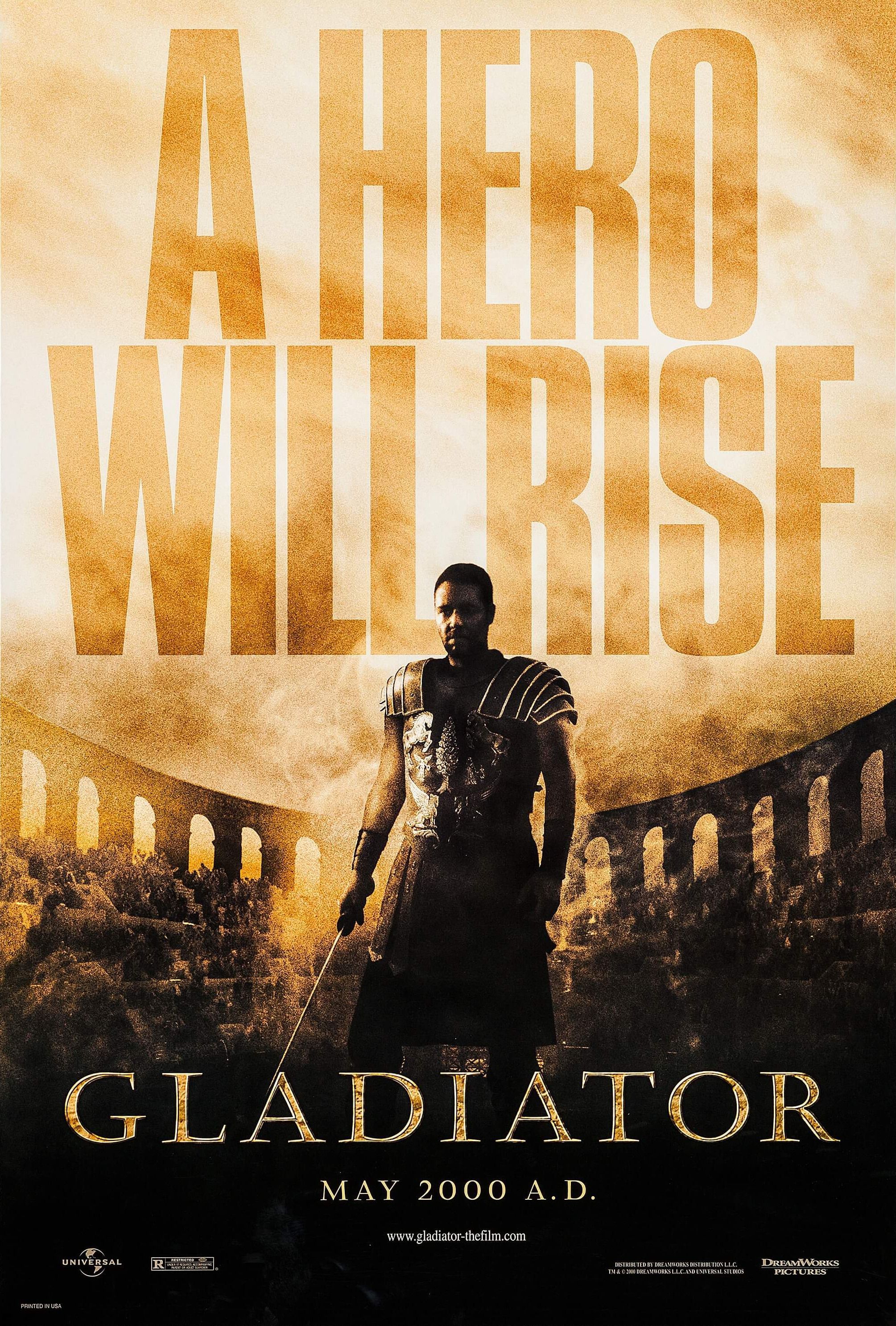
Gladiator
- Release Date
- May 1, 2000
- Director
- Ridley Scott
- Cast
- Russell Crowe , Derek Jacobi , Oliver Reed , Connie Nielsen , Joaquin Phoenix , Djimon Hounsou , Richard Harris
- Studio(s)
- DreamWorks Distribution , Universal Pictures , Scott Free Productions , Red Wagon Entertainment

